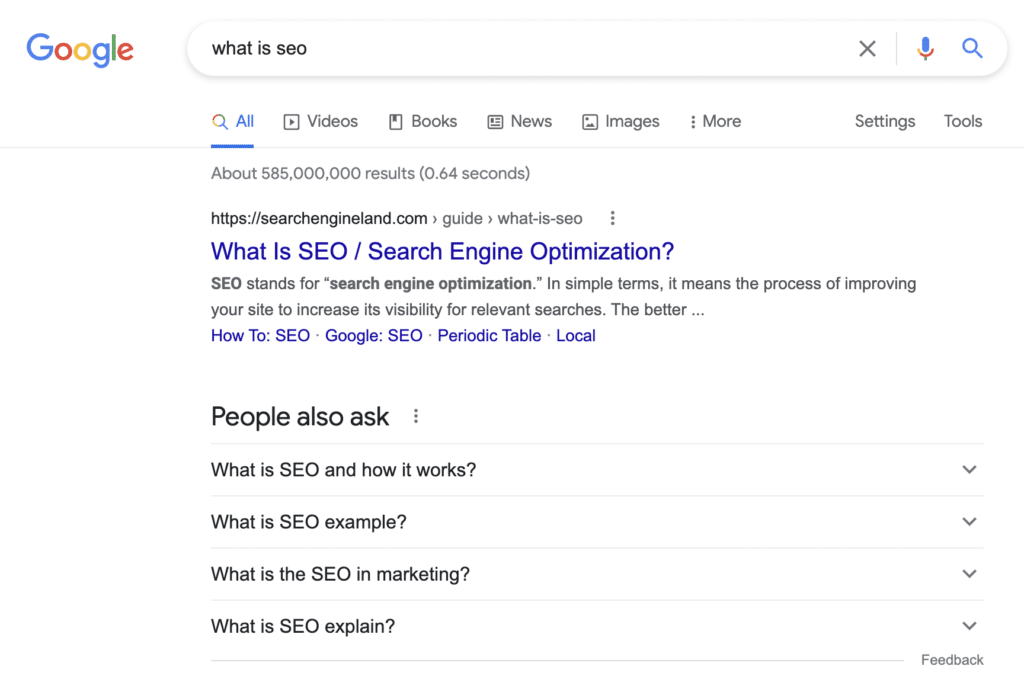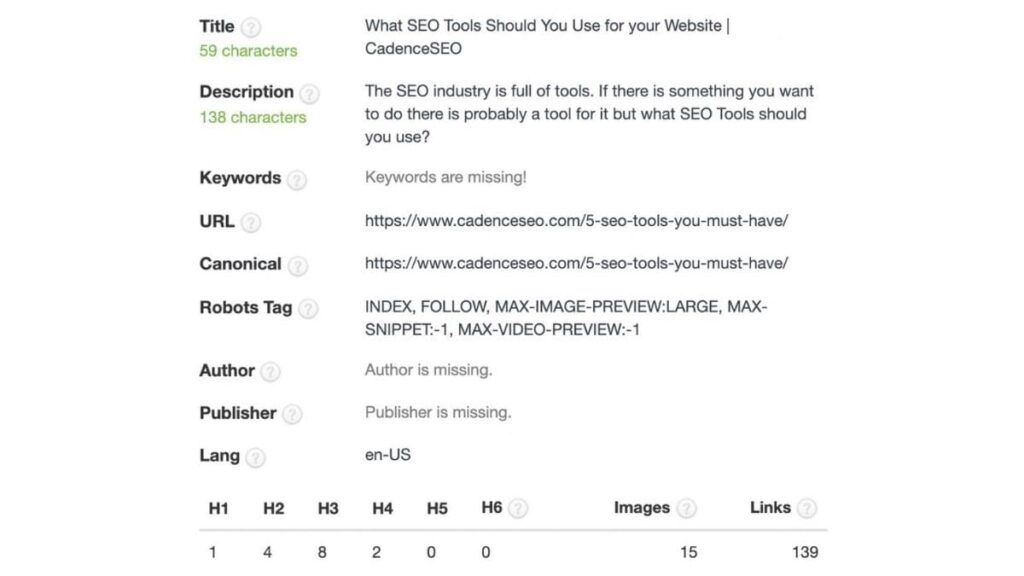When thinking about pillar content you have to think about what the term pillar means. The dictionary definition of a pillar is “a tall vertical structure of stone, wood, or metal, used as a support for a building”. That definition provides great insight as to what a pillar post or content means to your website and content strategy.
What is Pillar Content?
A pillar page is a page on your website that is the topical cornerstone for a large portion of your site’s content. In most cases, pillar content is a piece of content that comes in the form of a longer form blog post but can also be used as core content for your website. Regardless of it’s form the pillar content will act as cornerstone content for future content creation
For example, as a company that provides SEO Marketing Services to our clients we put out a pillar post that answers the question, What is SEO? At the end of the day, Pillar content is content that provides a complete answer to any question a user may be searching for on a given topic.
Once the pillar content is created and posted it acts as a launching pad for the remainder of your content strategy. Again, using the example above we were able to break out different portions of SEO into smaller more digestible blog posts on the subject of backlinks, and breadcrumbs. This can also be referred to as Topic clusters. Whether using the topic cluster model or just putting out longer form pieces of content having pillar content will help you in the search engines.
Why should you use Pillar Content?
There is one obvious answer here and that is because the longer-form blog content will answer the given question in a well-directed complete sense. Considering this content is of a longer form nature it allows you to better inform your readers on the topic that they are asking about as well as enable them to spend more time on your site. If done correctly, these pieces of content can also help control their journey to other areas of your website using internal links including future blog posts that are on topics within the pillar or cluster.
SEO Benefits
A little less obvious answer to this is the SEO benefits that you will receive from the pillar content itself. Content Marketers are great a putting together pieces of content that will help drive organic traffic. Considering that SEO is very heavily driven by content and links, having the longer form content on your site makes you look more authoritative and is more likely to get shared and linked to. Pillar pages get shared widely and often, especially among influencers in a given space. (singlegrain.com)
Word Count
Although with recent updates to Google’s algorithm, it has been rumored that word count has a lot less impact than it did in recent yes, there is still a high correlation between word count and rankings. Considering the depth that pillar articles are supposed to go into regarding a certain topic it is obvious that they would fall into the higher word count bucket, therefore increasing the possibility for it to rank higher for the targeted keywords.
Brand Awareness
The type of content that you are putting out with pillar content starts with a broad topic and then breaks it down into smaller pieces, which will give you more topic ideas to create from that pillar page of content. The pillar page content will get your readers interested in hearing what else you have to say as you continue to put out fresh content, which breaks down the pillar page topic. This will give you a steady stream of relevant content that will keep people coming back to your blog and hopefully convert into a subscriber or lead.
5 Steps to creating a piece of Pillar Content
Now that we have established what pillar content is and why you should take the time to make it part of your SEO Strategy.
Step 1: Choose your Keyword and Title that will speak to your target audience
When doing content marketing you always want to be aware of what your audience is searching for. This is the best way to make sure that your idea for pillar content is relevant. There are many ways to go about this but we highly recommend doing some highly targeted keyword research that will help you best formulate your content marketing strategies. If you have a pretty good idea about your ideal audience and how they would search one thing you can do is type your question or phrase into Google and then see what comes up in the people also ask boxes to make sure that you are in the right ballpark.

Step 2: Create an outline of the topic cluster and what information needs to be conveyed
Keeping everything clean and organized will help you when it comes to the hard part of writing the content itself. When breaking down the topics keep in mind you will likely want to create an additional shorter-form piece of content to expand on the information shown in the pillar articles. Remember the original content is the cornerstone of future content. This can also act as the table of contents for the post once it is finally completed and posted.
Step 3: Write the content
This is probably the hardest part of the whole thing but remember you are the expert on the subject and are looking to convey your message to your reader. You have already done the research regarding ideas for the pillar post and have outlined what you want to say. Now you just have to fill in the blanks. Keep in mind the average blog post is in the 800-1000 word range but we are dealing with a pillar blog post or page so you want to make sure that you are getting the word count up a bit. Ensure that you are content is engaging and conveys the message in a way that the reader is going to understand it.
While writing the content you want to also make sure that you are writing the content in a way that is easy to digest by using headings and keeping your paragraphs short and concise. The headings come from the table of contents or your outline. Later in the post, we will talk about a cool way to turn these in a way to really supercharge the engagement of the post.
Step 4: Post the Pillar Post to your Website
Once all the research, planning, and writing has been completed you are ready to post your post to your website so that people can read it. Be careful not to just throw it up there and hope for the best. Remember that this post is not just for people to read it on your site it is also intended to help you with your search engine rankings and drive organic search traffic to your website.
Some key factors to look at when posting your pillar blog post is that you are marking them up correctly with a strong H1 and H2 header as well as a unique SEO page title.

If you are not sure how to properly mark up your pillar blog posts it may be a good idea to reach out to an SEO marketing consultant. They can make sure that your content writing efforts are getting the results that you are hoping for by ensuring that everything is properly marked up and ready for search. This will ensure that your pillar content sees a steady stream of traffic.
Now for the little secret that will help supercharge the engagement of your content. The utilization of jump links within your content allows your readers to jump to a spot within the content that will answer a specific portion of your content. This technique, depending on the platform that your site is on, is somewhat of an advanced technique but can really help decrease the bounce rate of your posts and allow your users to pinpoint the portion of your content that they want to engage in. Remember these are long posts that are full of information.
Step 5: Promote and Share your content
What is the point of writing content if you do not get views of it? Once the content is posted it is now time for you to turn to your social networks, publications, and any other avenues to promote your new fresh relevant content so that they can help you spread the word. This not only allows for your content to get read but it also will help your site build authority. Because your content is top-notch and people will love it there is a great chance that websites will link back to your website.
Don’t Know Where to Start?
I know that we just shared the steps of writing pillar content but if you find yourself in a place where you don’t even know where to get started. The team at CadenceSEO would be excited to have the opportunity to help you along your journey. Click here to get started.






